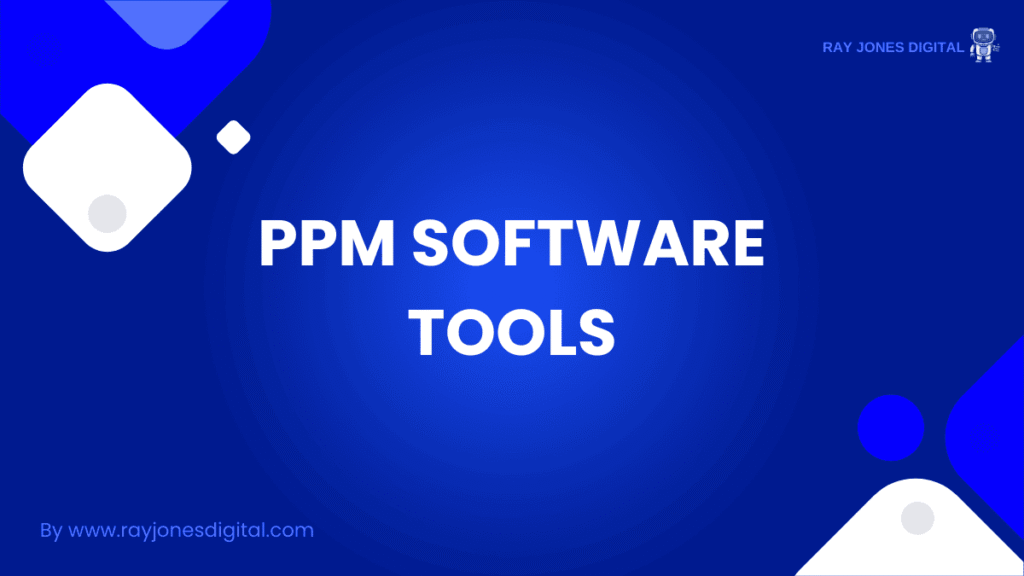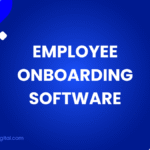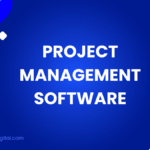
Traditional project management approaches often create silos where individual projects succeed or fail in isolation. This fragmented approach prevents organisations from optimising resource allocation, identifying strategic opportunities, and maintaining portfolio-wide visibility. The most successful companies have adopted sophisticated PPM software tools that transform how they plan, execute, and measure project success.
This comprehensive guide explores the six most effective PPM software platforms available in 2026, focusing on solutions that deliver measurable ROI improvements and enhanced portfolio visibility. Each platform offers unique strengths for different organisational needs and project types.
Why Portfolio Management Software Matters More Than Ever
The complexity of modern business environments demands sophisticated project portfolio management approaches. Organisations typically manage dozens of concurrent projects, each competing for limited resources whilst contributing to overarching strategic objectives. Without proper coordination, even successful individual projects can fail to deliver optimal organisational outcomes.
PPM software transforms how organisations approach project selection, resource allocation, and performance measurement. These platforms provide the visibility needed to make informed decisions about project prioritisation, resource deployment, and strategic alignment. The result is improved project success rates and enhanced return on investment across entire portfolios.
Modern PPM platforms integrate project management with strategic planning, financial management, and resource optimisation. This integration enables organisations to move beyond reactive project management toward proactive portfolio optimisation. The best platforms provide real-time insights that support agile decision-making and strategic course corrections.
The financial impact of effective PPM software extends beyond simple project cost savings. These platforms help organisations identify high-value opportunities, eliminate redundant initiatives, and optimise resource utilisation. Companies using sophisticated PPM tools typically see 15-25% improvements in portfolio ROI within the first year of implementation.
Essential Features for PPM Software Success
Strategic Alignment and Portfolio Prioritisation
Effective PPM platforms provide frameworks for evaluating projects against strategic objectives. These tools help organisations move beyond intuitive decision-making toward data-driven project selection and prioritisation processes.
The best platforms offer scoring mechanisms that evaluate projects across multiple dimensions—strategic alignment, financial return, resource requirements, and risk factors. This multi-dimensional analysis ensures project portfolios support broader organisational objectives whilst maintaining realistic resource constraints.
Advanced platforms incorporate scenario planning capabilities that help organisations evaluate different portfolio configurations. These tools enable “what-if” analyses that explore the impact of changing project priorities, resource allocations, or strategic directions.
Resource Management and Capacity Planning
PPM software excels at providing visibility into resource utilisation across project portfolios. These platforms help organisations identify resource bottlenecks, optimise skill deployment, and prevent team overcommitment.
Advanced resource management features enable organisations to model different resource allocation scenarios. This capability helps identify the optimal balance between project ambition and resource reality, preventing the common problem of spreading resources too thin across too many initiatives.
The most effective platforms integrate resource planning with financial management, providing complete visibility into both human and financial resource utilisation. This integration enables more sophisticated cost management and profitability analysis.
Performance Analytics and Reporting
Modern PPM platforms provide comprehensive analytics that transform raw project data into actionable insights. These tools help organisations identify trends, predict potential issues, and optimise portfolio performance over time.
Advanced analytics capabilities include predictive modelling that identifies projects at risk of delays or budget overruns. Early warning systems enable proactive intervention before issues impact project outcomes or portfolio performance.
Customisable reporting features ensure different stakeholders receive relevant information in appropriate formats. Executive dashboards provide high-level portfolio overviews, whilst project managers receive detailed operational reports.
Integration and Collaboration Capabilities
PPM software serves as the central nervous system for project portfolio management, connecting various tools and stakeholders involved in project delivery. Effective platforms integrate seamlessly with existing project management tools, financial systems, and collaboration platforms.
API-driven integration capabilities enable organisations to connect PPM platforms with specialised tools used by different teams. This connectivity eliminates duplicate data entry whilst ensuring information consistency across all project management systems.
Advanced collaboration features support complex stakeholder coordination across multiple projects. These tools ensure relevant parties receive appropriate information whilst preventing information overload for team members focused on specific project areas.
The 6 Best PPM Software Tools for 2026
1. Microsoft Project Online
Microsoft Project Online provides comprehensive PPM capabilities integrated within the familiar Microsoft ecosystem. The platform excels at connecting project management with broader business applications, creating seamless workflows for organisations already using Microsoft tools.
The software’s strength lies in its integration with Microsoft 365 applications. Project teams can leverage familiar tools like Teams, SharePoint, and Power BI whilst maintaining complete project portfolio visibility. This integration reduces training requirements and accelerates user adoption.
Advanced resource management capabilities provide detailed visibility into skill availability and capacity planning. The platform helps organisations optimise resource allocation across multiple projects whilst preventing team overcommitment.
Financial management features integrate with Microsoft’s business intelligence tools, providing sophisticated cost analysis and profitability reporting. Real-time financial data enables proactive budget management and improved ROI measurement.
The platform’s scalability accommodates organisations from small teams to large enterprises. Flexible licensing options ensure companies pay for capabilities they actually use whilst maintaining room for growth.
2. Clarity PPM (Broadcom)
Clarity PPM offers enterprise-grade portfolio management capabilities designed for large, complex organisations. The platform excels at strategic alignment, resource optimisation, and comprehensive portfolio analytics.
The software’s strategic alignment features help organisations evaluate projects against multiple strategic objectives. Sophisticated scoring mechanisms ensure project portfolios support broader business goals whilst maintaining realistic resource constraints.
Advanced resource management capabilities provide detailed visibility into skill availability across the entire organisation. The platform helps identify resource conflicts before they impact project delivery whilst optimising skill deployment across multiple initiatives.
Financial management features provide comprehensive cost tracking, budget management, and profitability analysis. Integration with enterprise financial systems ensures accurate cost data and supports sophisticated financial reporting.
The platform’s workflow automation capabilities streamline project approval processes, change management, and routine administrative tasks. This automation reduces administrative overhead whilst ensuring consistent project management processes.
3. Planview Enterprise One
Planview Enterprise One combines project portfolio management with strategic planning capabilities. The platform excels at connecting day-to-day project execution with long-term strategic objectives.
The software’s strategic planning features help organisations develop comprehensive roadmaps that align project portfolios with business strategy. Visual roadmapping tools make complex strategic relationships clear and actionable.
Advanced capacity planning capabilities provide detailed visibility into resource availability and skill requirements. The platform helps organisations optimise resource allocation whilst identifying potential capacity constraints before they impact project delivery.
Financial management features integrate project costs with strategic value measurement. The platform provides sophisticated ROI analysis that considers both financial returns and strategic value creation.
The platform’s agile planning capabilities support organisations using hybrid project management approaches. Teams can combine traditional project management with agile methodologies whilst maintaining portfolio-wide visibility.
4. Smartsheet
Smartsheet provides user-friendly PPM capabilities with extensive customisation options. The platform excels at democratising project portfolio management, making sophisticated capabilities accessible to organisations without dedicated PMO teams.
The software’s intuitive interface reduces training requirements whilst providing comprehensive project management capabilities. Teams can quickly create custom workflows, reports, and dashboards without extensive technical expertise.
Automation features streamline routine project management tasks, from status updates to approval workflows. This automation reduces administrative overhead whilst ensuring consistent project management processes.
Integration capabilities connect Smartsheet with hundreds of business applications, from accounting systems to collaboration tools. This connectivity ensures Smartsheet fits seamlessly into existing business workflows.
The platform’s collaboration features support complex stakeholder coordination across multiple projects. Real-time updates ensure all team members have access to current project information whilst maintaining appropriate access controls.
5. Wrike
Wrike offers modern PPM capabilities with strong collaboration features and intuitive user interfaces. The platform excels at supporting distributed teams and complex project coordination requirements.
The software’s collaboration features support real-time communication and document sharing across project teams. Advanced proofing capabilities enable efficient review and approval processes for creative and technical deliverables.
Custom workflows accommodate different project types and organisational processes. Teams can create tailored project templates that ensure consistent approaches whilst accommodating unique project requirements.
Advanced analytics provide detailed insights into project performance, resource utilisation, and team productivity. Customisable dashboards ensure different stakeholders receive relevant information in appropriate formats.
The platform’s time tracking and resource management features provide detailed visibility into project costs and team utilisation. This data supports accurate project costing and improved resource planning.
6. Monday.com
Monday.com provides flexible PPM capabilities with emphasis on visual project management and team collaboration. The platform excels at making complex project information accessible and actionable for all team members.
The software’s visual interface makes project status, dependencies, and progress immediately clear. Customisable views accommodate different working styles and information requirements across diverse team members.
Automation features streamline routine project management tasks whilst ensuring consistent processes. Teams can create custom automation rules that reduce manual work and improve project coordination.
Integration capabilities connect Monday.com with essential business tools, from communication platforms to financial systems. This connectivity ensures seamless information flow across all project management activities.
The platform’s scalability accommodates teams from small startups to large enterprises. Flexible configuration options ensure the software adapts to organisational needs rather than forcing process changes.
Choosing the Right PPM Platform for Your Organisation
Assess Your Organisational Complexity
Different PPM platforms excel at different organisational scales and complexity levels. Large enterprises with complex governance requirements might benefit from Clarity PPM’s sophisticated capabilities, whilst smaller organisations might find Smartsheet’s user-friendly approach more appropriate.
Consider your typical project portfolio size and complexity. Organisations managing hundreds of concurrent projects require different capabilities than those coordinating a dozen major initiatives.
Evaluate your existing technology ecosystem. Organisations heavily invested in Microsoft tools might find Project Online’s integration advantages compelling, whilst those using diverse software tools might prefer platforms with extensive API capabilities.
Consider Integration Requirements
Modern PPM platforms must integrate seamlessly with existing business systems. Evaluate how well potential platforms connect with your current accounting, collaboration, and project management tools.
Assess the quality of available integrations. Simple data export capabilities differ significantly from real-time, bidirectional data synchronisation. The level of integration affects workflow efficiency and data accuracy.
Consider future software needs. As your organisation grows, you might need additional capabilities or different software solutions. Choose platforms that can adapt to changing requirements without forcing complete system replacements.
Evaluate User Adoption Factors
The most sophisticated PPM platform provides no value if teams don’t use it effectively. Consider your organisation’s technical comfort level and change management capabilities.
Evaluate training requirements for different platforms. Some tools require significant learning curves, whilst others prioritise intuitive interfaces that enable quick adoption.
Consider ongoing support requirements. Organisations without dedicated PMO teams might benefit from platforms with extensive self-service capabilities and user communities.
Assess Financial Implications
PPM software represents a significant investment that should deliver measurable returns. Evaluate both direct software costs and implementation expenses, including training, customisation, and integration work.
Consider the total cost of ownership over multiple years. Some platforms have lower initial costs but require significant ongoing customisation and support expenses.

I am Ray Jones Digital
My current occupations: a Digital Marketer, Local SEO expert, Link Builder, and WordPress SEO specialist. Shopify SEO, Ecommerce Store Management, and HTML & WordPress Developer I have been practicing the above mentioned services for more than 10 years now As an SEO expert working with your ongoing projects.



